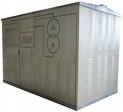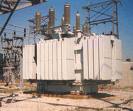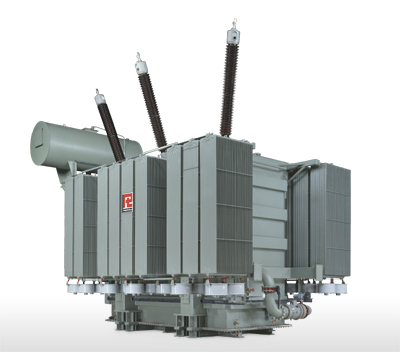How to determine the loss of electricity in a power transformer
Determination of energy losses in a two-winding transformer
To calculate the energy losses in a two-winding transformer, the following initial data are required.
Catalog or passport: rated power of the transformer Sn, kVA, no-load losses of the transformer at rated voltage dРхх, kW, short-circuit losses of the transformer at rated load dРк: h, kW.
Actual or calculated: electricity recorded for the billing period with meters: Ea, kWh, Er, kvarh (meters are installed on the higher voltage side of the step-down transformer), the total number of hours of operation of the transformer Tp, h , which is accepted in January, March, May, July, August, October, December equal to 744 hours, in April, June, September, November — 720 hours, in February — 672 hours (for a leap year — 696 hours), the number of hours of operation of the transformer with a nominal load Trab h, which is assumed to be equal for enterprises working in one shift — 200, in two shifts — 450, in three shifts — 700 hours per month.
 This initial data is used to determine:
This initial data is used to determine:
a) the weighted average power factor cos fisr (but trigonometric tables) from the ratio

In cases where there are no reactive power meters, the actual coefficient of the reactive power compensation degree is taken instead of the coefficient.
The coefficient of the degree of compensation from the ratio

according to trigonometric tables, it translates to cosfim approximately raven cosphisr
b) load factor of the transformer

c) losses of electrical energy in the transformer, kWh,

Determination of power losses in a three-winding transformer
To calculate the power losses in a three-winding transformer, the following initial data are required.
 Catalog or passport: the rated power of the transformer Sn, kV-A, the power of the windings of the higher, medium and low voltage of the transformer Svn = Сн, Снн, Снн (in the passport or catalog of the transformer are given as a percentage of the memory power) , kV-A; no-load losses of the transformer at rated voltage dPxx, kW, short-circuit loss of high, medium and low voltage windings at full load of windings dPvn, dPsn, dPnn kW.
Catalog or passport: the rated power of the transformer Sn, kV-A, the power of the windings of the higher, medium and low voltage of the transformer Svn = Сн, Снн, Снн (in the passport or catalog of the transformer are given as a percentage of the memory power) , kV-A; no-load losses of the transformer at rated voltage dPxx, kW, short-circuit loss of high, medium and low voltage windings at full load of windings dPvn, dPsn, dPnn kW.
Actual or estimated: the electricity passed through the windings of the higher Eavn = Ealn + Eann, the voltage of the middle Eann and the lower transformer of Eann, kWh (step-down transformer is assumed), the number of hours of operation of the transformer rated load (assumed, as in the case of a transformer with two windings) Trab, h.
This initial data is used to determine:
a) weighted average cos fisr from the high, medium and low voltage sides: cos fisrvn, cos fisrnn
Weighted average power factors are determined from active and reactive energy meter readings. In the absence of reactive power meters, as in the case of two-winding transformers, the actual reactive power compensation factor is taken as cos fisr.
b) load factors of each of the windings of the transformer:



c) electricity and transformer losses, kWh:


